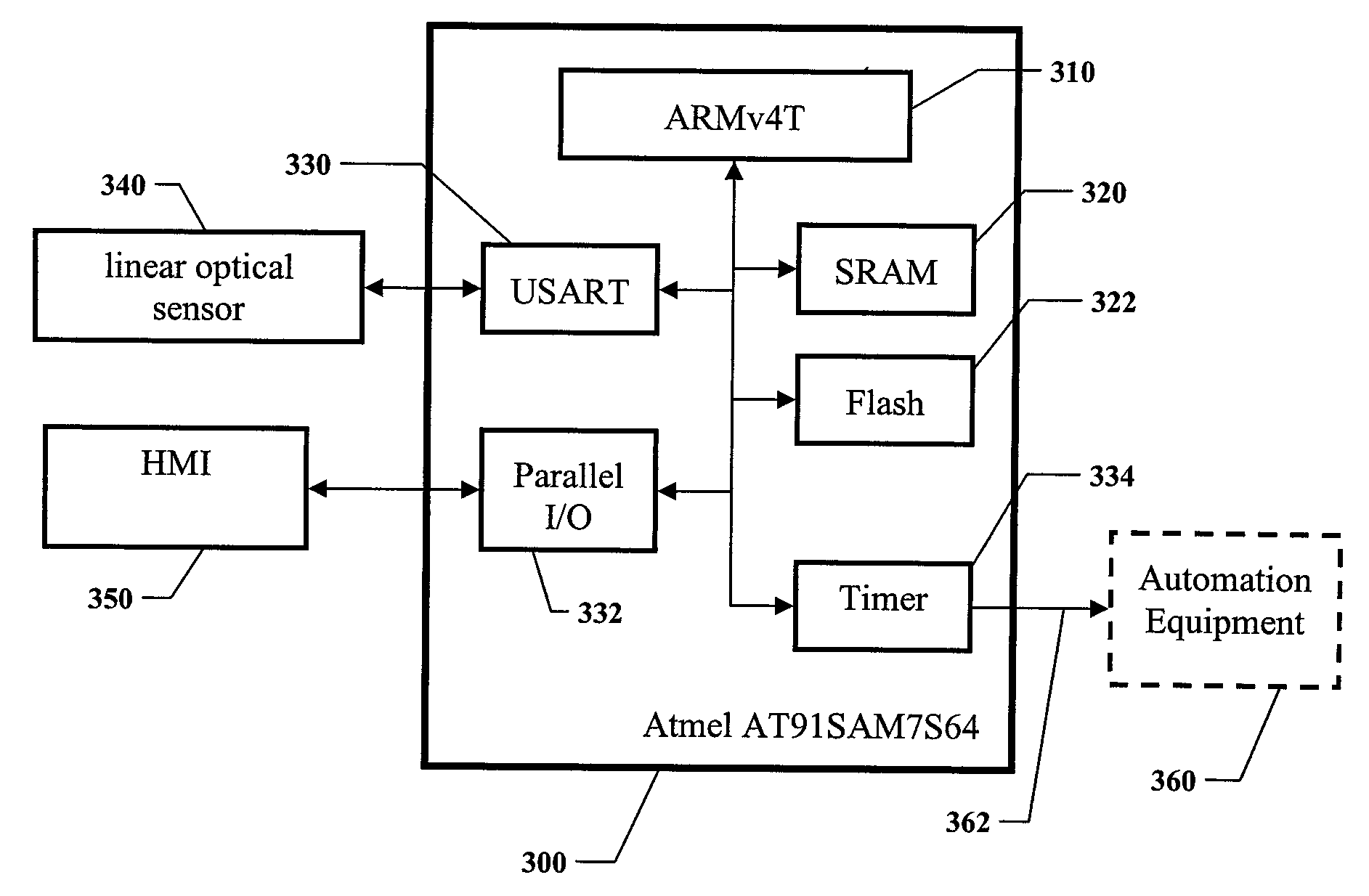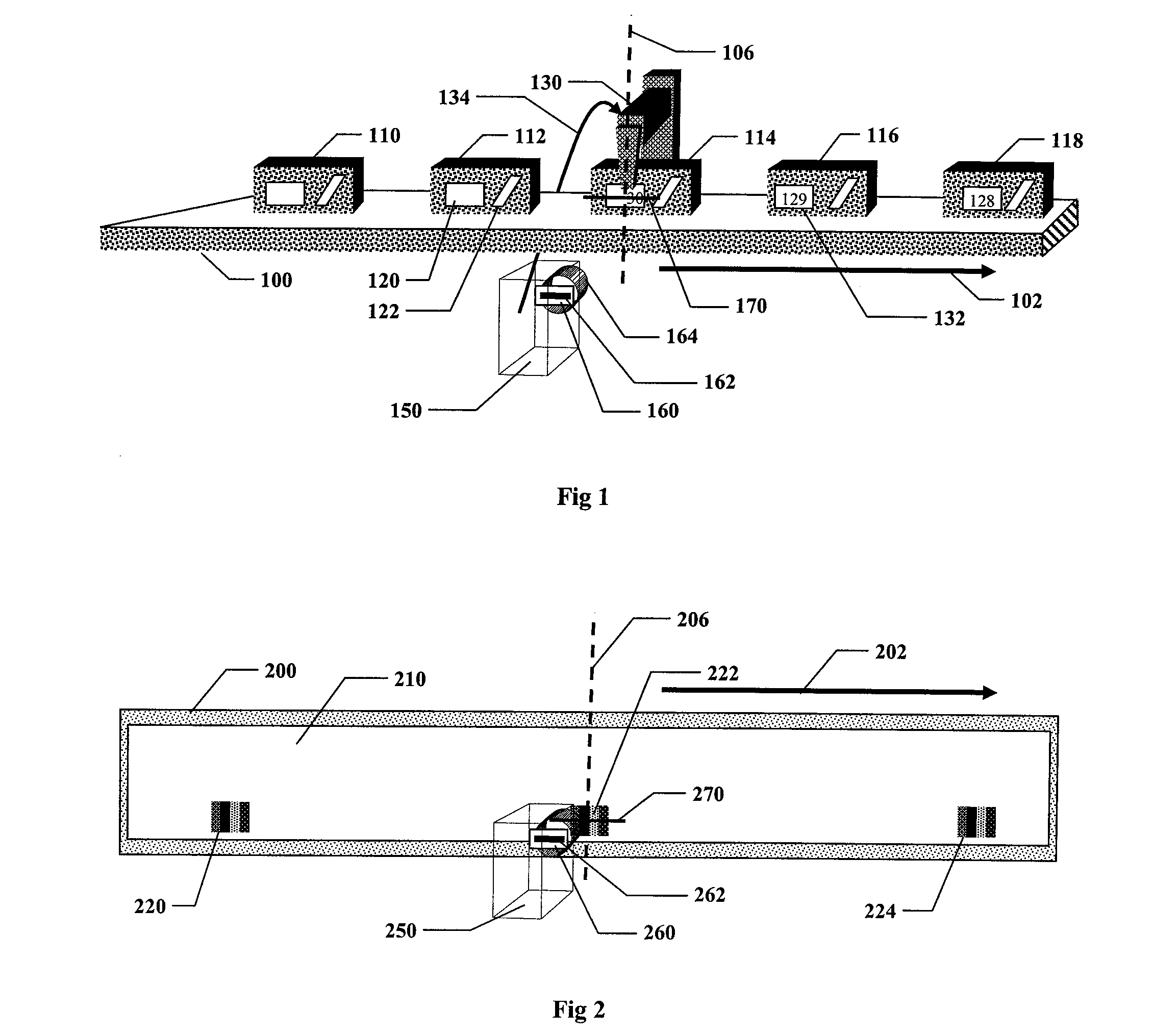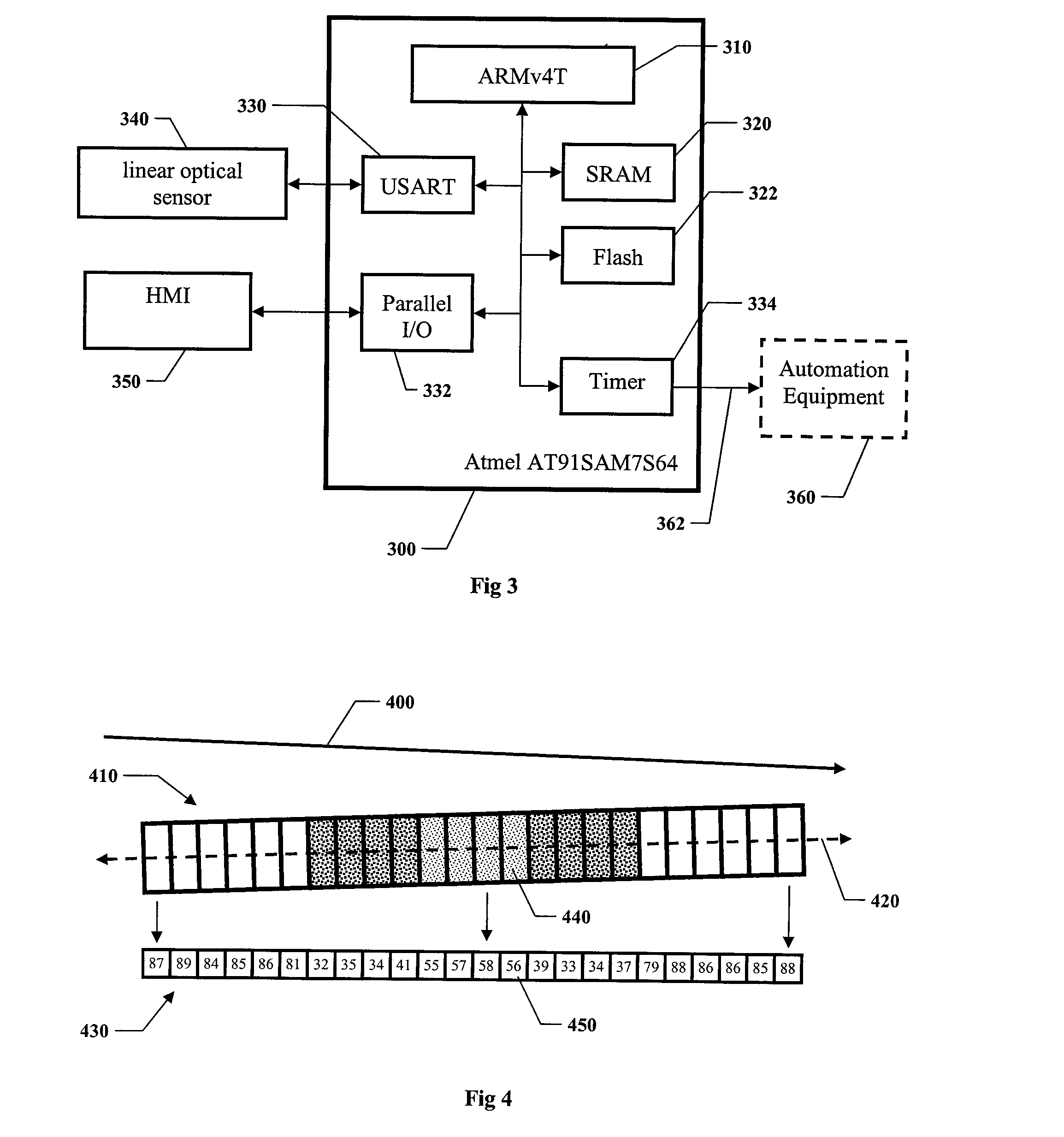Method and System for Optoelectronic Detection and Location of Objects
a technology of optoelectronic detection and location, applied in the field of optoelectronic sensors, can solve the problems of label not being printed, and potentially costly mistakes, and achieve the effects of avoiding adverse effects on production process, avoiding potential cost, and avoiding potential cost overruns
- Summary
- Abstract
- Description
- Claims
- Application Information
AI Technical Summary
Benefits of technology
Problems solved by technology
Method used
Image
Examples
Embodiment Construction
[0074]In the following detailed description of the illustrative embodiments, reference is made to the accompanying drawings which form a part hereof, and in which are shown by way of illustration specific embodiments in which the invention may be practiced. It is to be understood that other embodiments may be utilized and structural changes may be made without departing from the scope of the invention.
Some Definitions
[0075]As used herein the term linear detector refers to an optoelectronic system according to an embodiment of the invention, for purposes of providing information describing objects, herein equivalently referred to as object information. Similarly, the term linear detection method refers to a method according to an embodiment of the invention for like purposes.
[0076]Applications of a linear detector include but are not limited to analysis, detection, and location of objects. In an illustrative embodiment intended for object detection, the object information comprises k...
PUM
| Property | Measurement | Unit |
|---|---|---|
| distance | aaaaa | aaaaa |
| distance | aaaaa | aaaaa |
| clock frequency | aaaaa | aaaaa |
Abstract
Description
Claims
Application Information
 Login to View More
Login to View More - R&D
- Intellectual Property
- Life Sciences
- Materials
- Tech Scout
- Unparalleled Data Quality
- Higher Quality Content
- 60% Fewer Hallucinations
Browse by: Latest US Patents, China's latest patents, Technical Efficacy Thesaurus, Application Domain, Technology Topic, Popular Technical Reports.
© 2025 PatSnap. All rights reserved.Legal|Privacy policy|Modern Slavery Act Transparency Statement|Sitemap|About US| Contact US: help@patsnap.com



